Higher classification Nystalus | Phylum Chordata Family Bucconidae Scientific name Nystalus chacuru Rank Species | |
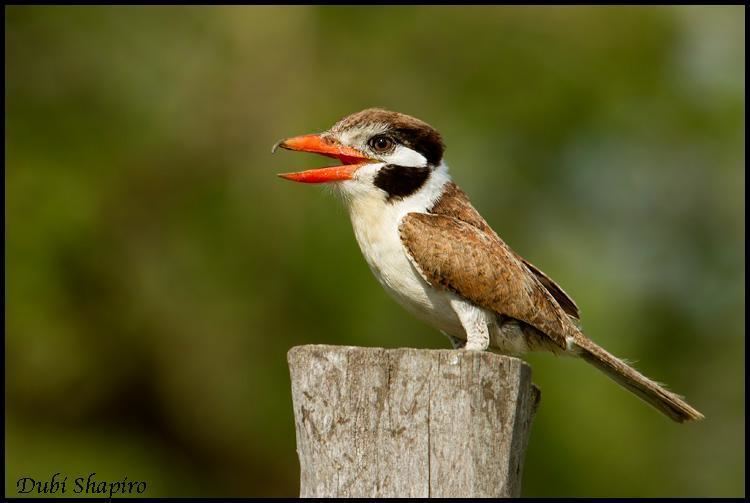 | ||
Similar Bird, Puffbird, Nystalus, Spot‑backed puffbird, Crescent‑chested puffbird | ||
White eared puffbird nystalus chacuru serra das araras brazil
The white-eared puffbird (Nystalus chacuru) is a species of bird in the Bucconidae family, the puffbirds. It is found in Brazil, Bolivia, Paraguay, Argentina, and Peru. Its natural habitats are subtropical and tropical dry forests, subtropical and tropical moist lowland forests, dry savanna, and heavily degraded former forest.
Contents
- White eared puffbird nystalus chacuru serra das araras brazil
- White eared puffbird
- Description
- Range SE Cerradan Brazil
- References
White eared puffbird
Description
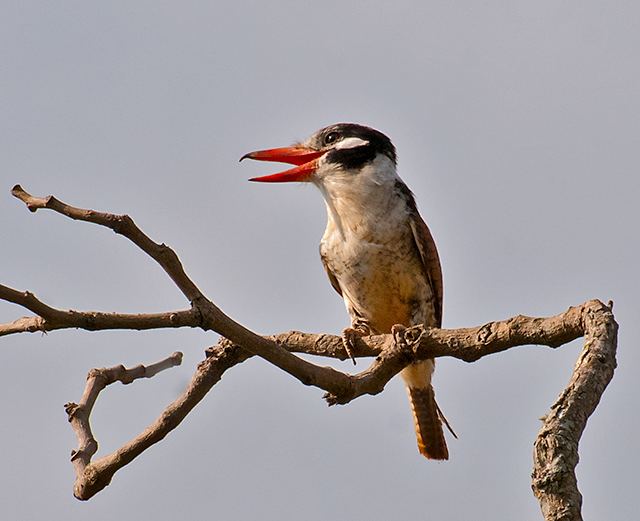
Like some other puffbirds, the white-eared puffbird is a round, plump bird with a short, very narrow tail. It has a large head and orange, black-tipped bill, the head appearing almost too large for its body. The sit-and-wait feeding strategy, for insects or opportunistic prey, may explain this body shape.
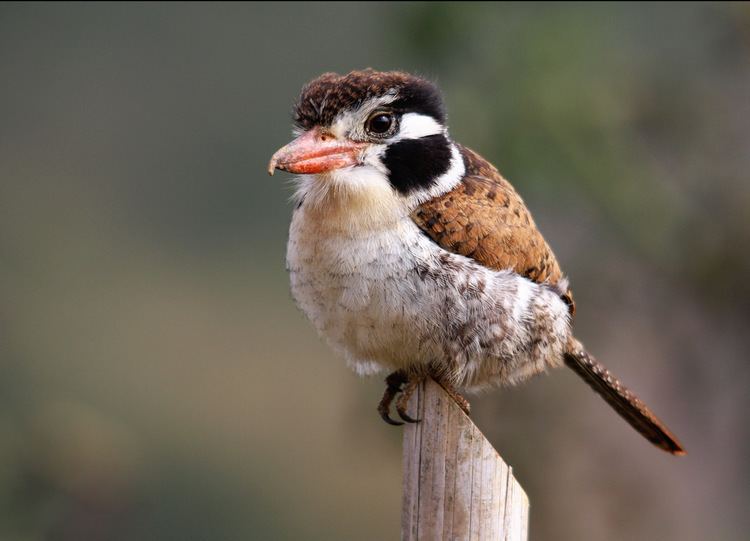
The bird has a medium brown back and wings, white and black flecked on the breast. The upper breast is white, extending to a narrow-to-medium-width white collar surrounding the neck. The species is named for its distinctive, medium-sized bright white ear patch. It has blackish eyes, black surrounding the white ear patch, and the same brown on its crown as on the wings and back.
Range: SE Cerradan Brazil
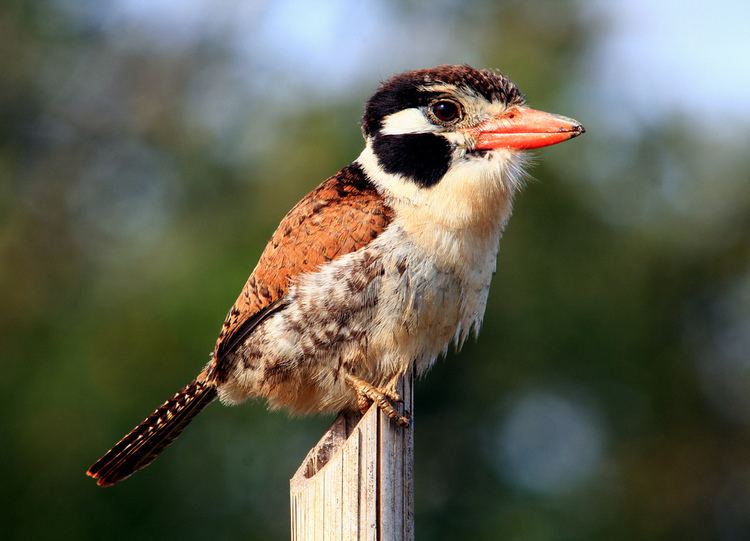
The white-eared puffbird's range is in south-eastern Brazil, centered on the Cerrado region, and on the southeast Atlantic coast from northern Bahia state south to the Paraná–Santa Catarina state borders. It covers much of the eastern and northern Pantanal, and southern areas of the Caatinga.
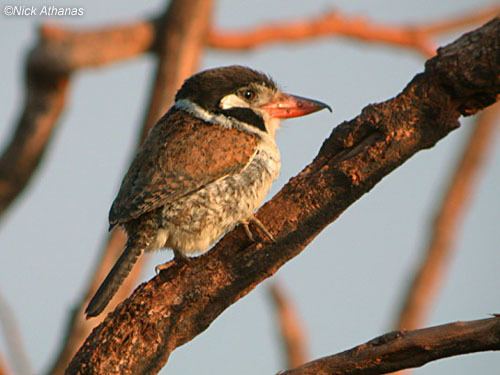
The north and west parts of its range include the upstream headwaters of some Amazon Basin river systems, encompassing nearly all of northern Bolivia, the Madeira River's many headwater tributaries, and the extreme headwaters of the Tapajós River. East of the Tapajós, the range expands into the Cerrado, the upper half of the Xingu River drainage, and the entire drainage system of the Araguaia-Tocantins River (the eastward system, generally considered part of the Amazon Basin).
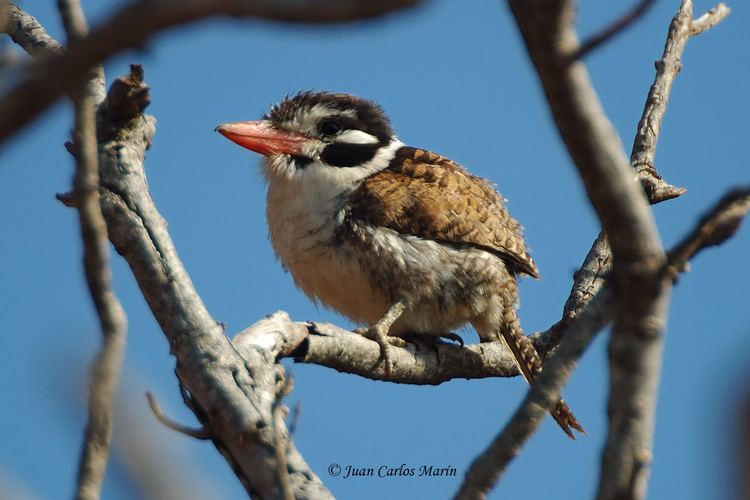
The bird is found in Peru on the very western border region of Bolivia and in some localities in north-central Peru. Another second locale is mid-river on the downstream Madeira River in southern Amazon Basin Amazonas state.
